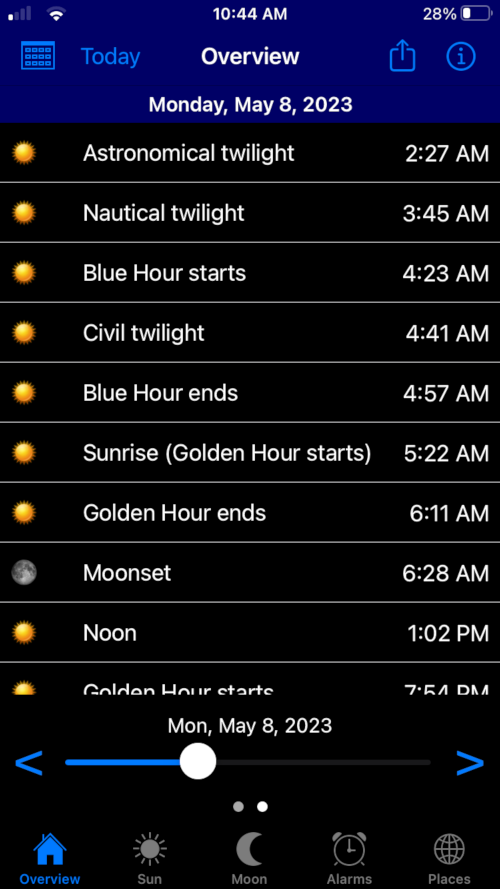Twilight is the time between day and night when there is light outside, but the Sun is below the horizon. The sky can take on spectacular colors during the period of twilight. There are three categories of twilight that are defined by how far the sun is below the horizon.
Civil twilight occurs when the Sun is less than 6 degrees below the horizon. In the morning, civil twilight begins when the Sun is 6 degrees below the horizon and ends at sunrise. In the evening, it begins at sunset and ends when the Sun reaches 6 degrees below the horizon.
Nautical twilight occurs when the Sun is between 6 and 12 degrees below the horizon. In the morning, nautical twilight begins when civil twilight ends and ends at sunrise. In the evening, it begins at sunset and ends when civil twilight begins.
Astronomical twilight occurs when the Sun is between 12 and 18 degrees below the horizon. In the morning, astronomical twilight begins when nautical twilight ends and ends at sunrise. In the evening, it begins at sunset and ends when nautical twilight begins.
The Golden Hour is the time just after sunrise or just before sunset. During this time, everything is bathed in a warm, reddish light. The Golden Hour lasts - like the Blue Hour - not a full hour. LunaSolCal calculates the GoldenHour as the time span when the sun is between 0 and 6 degrees above the horizon.
The Blue Hour is the time before sunrise and after sunset when the sky takes on a blue color. The Blue Hour lasts about 20 to 30 minutes. For calculating the time of the Blue Hour LunaSolCal uses the time span when the sun is between 4 and 8 degrees below the horizon.
LunaSolCal calculates all twilight times, Golden and Blue hours (and a lot more) for selected locations:
iOS

Android

LunaSolCal is available in these fine App Stores:



